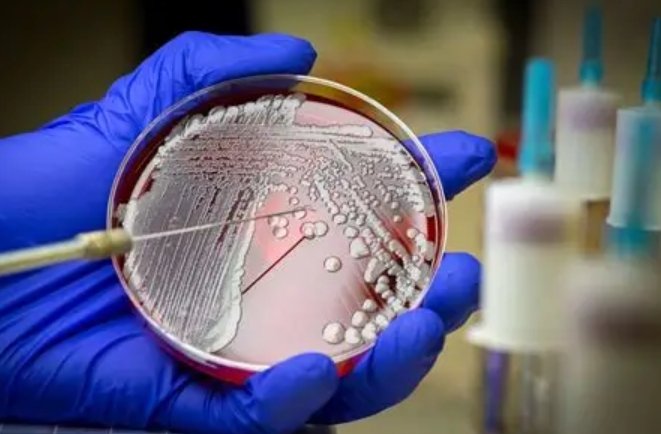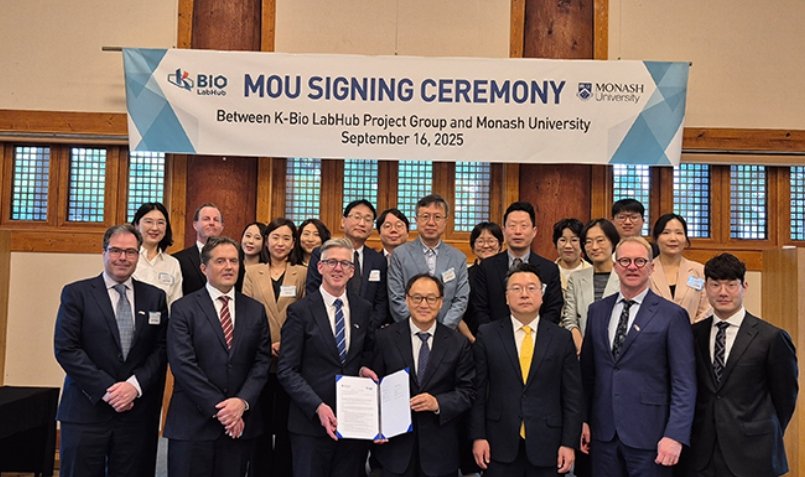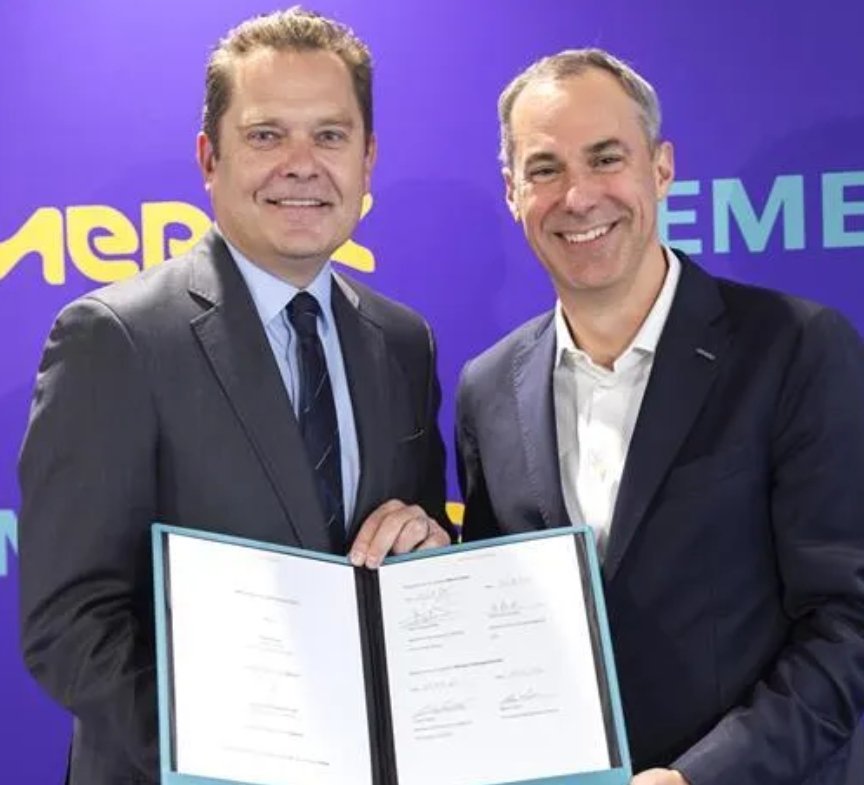
image credit- shutterstock
The global CNS disorders market, in 2022, was valued at $116 billion, ranking it as the fourth largest therapy area behind oncology ($189 billion), immunology ($138 billion), and diabetes ($134 billion). Looking ahead, with ongoing improvements in CNS innovation, growth is expected to accelerate. This growth trajectory could potentially expand the CNS market to between $147 billion and $169 billion globally by 2027. In the APAC region, China's CNS market is anticipated to reach $19.9 billion by 2030. Japan, on the other hand, is expected to grow at a rate of 5.5 per cent from 2022 to 2030, according to an IQVIA report.
The report further highlights the rapid advancement of the CNS innovation landscape, with a substantial 31 per cent increase in the pipeline over the past five years. Globally, CNS research now comprises 14 per cent of the overall industry R&D pipeline, positioning it as the second largest therapy area following oncology. Alzheimer’s and Parkinson’s diseases alone contribute to 25 per cent of all projects. Rare disorders like Huntington’s disease, ALS, and Duchenne muscular dystrophy also hold a significant 14 per cent share, underscoring substantial unmet medical needs. Noteworthy developments include ongoing research into psychedelics-derived treatments for various CNS disorders, alongside emerging cell and gene therapies aimed at achieving disease-reversing or curative effects in neurodegenerative and neuromuscular diseases.
Big pharma has renewed its interest and there has been a flurry of activity in this space. Some significant deals include Bristol Myers Squibb's $14 billion acquisition of Karuna Therapeutics in March 2024. Karuna’s lead product, KarXT, is expected to launch in late 2024 in the US as a treatment for schizophrenia in adults. In the same month, Boehringer Ingelheim and Sosei Heptares joined forces to develop first-in-class treatments targeting all symptoms of schizophrenia.
In 2023, AbbVie acquired Cerevel Therapeutics for $8.7 billion, bolstering its neuroscience pipeline with candidates for schizophrenia, Parkinson's disease (PD), and mood disorders. Also in 2023, Novartis spent $500 million to acquire DtX Pharma, enhancing its neuroscience capabilities. Additionally, Otsuka Pharmaceuticals acquired Mindset Pharma for CAD 80 million to strengthen its pipeline in neurological disorders. Pfizer's $11.6 billion acquisition of Biohaven, announced in 2022, was also a significant deal in this space.
The APAC scenario
In the Asia Pacific (APAC) region, several CNS drugs are progressing through clinical trials, with a strong emphasis on pain, depression, schizophrenia, and epilepsy treatments. Notably, APAC leads in conducting clinical trials for anxiety, bipolar disorder, depression, epilepsy, migraine, and schizophrenia compared to other regions.
Japanese drug makers are at the forefront of regional CNS development, with Eisai Co., Ltd. securing multiple approvals in the field. These include Eisai's Aricept and Leqembi for Alzheimer’s disease, and Fycompa for epilepsy. Otsuka Holdings has also made significant strides with Abilify and Rexulti for treating schizophrenia and depression, respectively. Additionally, Takeda has successfully commercialised Azilect (developed by Teva Pharmaceuticals) for Parkinson’s disease, and Trintellix (developed by H. Lundbeck A/S) for major depressive disorder in Japan.
The pharma majors also have a substantial pipeline, indicating that they will likely continue to play a prominent role in neurology. Eisai's robust pipeline features the E2814 anti-MTBR tau antibody for Alzheimer’s disease in phase II/III, while Takeda progresses soticlestat in phase III, and Otsuka advances ulotaront in phase II/III, all aimed at various neurological conditions. In 2023, the Japanese government through the Ministry of Education, Culture, Sports, Science and Technology (MEXT) also initiated a brain and neuroscience integration programme with a budget of 9.3 billion yen. This programme aims to develop therapeutic drugs for dementia.
Advancements in CNS drug development
Monoclonal Antibodies (mAB)
Monoclonal antibodies lead the way in CNS drug development, with three approved treatments—aducanumab (Aduhelm; Eisai/Biogen), lecanemab (Leqembi; Eisai), and donanemab (Eli Lilly)—for Alzheimer’s disease.
“A significant advancement in neurological disorder therapeutics has been the development of anti-amyloid monoclonal antibodies (mAbs) as disease-modifying treatments for Alzheimer’s disease. The approval of aducanumab in 2021 ended a 17 year period during which no new AD therapeutics were approved. Along with the more recently approved agents lecanemab and donanemab, these mAbs act through the targeting and removal of Aβ plaques, lowering the amyloid burden within the brain and reducing clinical decline by approximately 30 per cent. This effect is clinically meaningful in terms of extended time spent in the mild phase of the disease, therefore improving quality of life for patients and carers,” said Clíona MacSweeney, Neuroscience Program Leader at Nxera Pharma.
Japan-based Nxera Pharma, formerly known as Sosei Heptares, has a robust pipeline of candidates for neurological disorders, including schizophrenia. The company has also forged partnerships with big pharma firms such as AbbVie and Boehringer Ingelheim.
Further mAbs continue to be developed, with Roche reporting that its mAb trontinemab virtually abolished plaque in three months in a small dose-finding study. In June 2024, Roche also announced positive results from phase II clinical trials for the mAb prasinezumab, showing promise in slowing the rapid progression of parkinson's disease.
Immunotherapies
Immunotherapy is proving to be useful in treating neurological conditions like Parkinson's disease and Alzheimer's disease.
“Immunotherapies are also being developed for Parkinson’s disease and a promising novel approach is Roche/Prothena’s mAb, prasinezumab, which is directed against aggregated α-synuclein. If approved, prasinezumab is estimated to generate global sales of $2.1 billion by 2029, leading the Parkinson’s disease market and reflecting the high unmet medical need for disease-modifying approaches,” said Clíona.
Several companies are advancing immunotherapies for CNS disorders. For instance, in June 2024, Vaxxinity announced successful completion of phase I goals in patients with Parkinson's disease using its immunotherapy.
Furthermore, Takeda Pharmaceutical has secured an option for an Alzheimer's disease immunotherapy developed by AC Immune. AC Immune is expected to release its first phase II data soon.
Neurostimulation therapies
“The development of neurostimulation devices, such as responsive neurostimulation (RNS), transcranial magnetic stimulation (TMS), and deep brain stimulation (DBS), has made it possible to treat diseases including epilepsy, Parkinson's disease, depression, and chronic pain with minimally invasive or non-invasive methods. By modulating brain activity, these devices greatly enhance patient outcomes and overall quality of life,” said Soo See Ann, Head Psychologist, Neurowyzr, Singapore.
Built on clinical evidence and powered by advanced analytics and AI, Neurowyzr provides a complete suite of gamified digital assessments and omni-platform care to bring brain health and mental wellbeing to everyone.
There have been several significant developments in this field. The University of Melbourne researchers have pioneered a technique to personalise TMS treatment for depression, potentially improving outcomes for Australian patients. Their research has identified specific brain pathways involved in depression, leading to the development of new methods that allow precise targeting of these brain circuits with TMS therapy.
Singaporean researchers have also initiated a groundbreaking approach to combat treatment-resistant depression. This pilot programme focuses on personalised TMS therapy, offering hope to individuals grappling with mental health conditions.
Headquartered in Israel, BrainsWay specialises in cutting-edge noninvasive neurostimulation therapies for mental health conditions, advancing neuroscience through its proprietary Deep Transcranial Magnetic Stimulation (Deep TMS) platform technology. The company is recognised as the pioneer and sole TMS provider with three FDA-cleared indications, backed by pivotal clinical trials that validate its effectiveness in treating major depressive disorder, including anxiety symptom reduction, obsessive-compulsive disorder, and smoking addiction. In 2023, BrainsWay announced the broadened accessibility of its Deep TMS technology in Taiwan.
Similarly, NeuroSigma, a US-based company, is leveraging eTNS technology to address neurological and neuropsychiatric disorders. The company's Monarch eTNS System, approved by the US FDA as the first non-pharmaceutical treatment for paediatric ADHD. NeuroSigma recently expanded into Singapore, recognising Asia as a pivotal market for its neurostimulation therapies.
Gene Therapies
Gene therapy is one of the most important scientific advances; Novartis’ Onasemnogene abeparvovec (Zolgensma), a treatment for spinal muscular atrophy (SMA), is one example. When a disorder's underlying genetic cause is corrected, gene therapy may be able to treat it once and produce long-term advantages, possibly even curing the condition.
“Similar to this, CRISPR-Cas9 and other gene editing technologies are being investigated for their potential to treat neurological diseases at the genetic level. These technologies offer precise modifications to the genes that cause disease in conditions like Huntington's disease, Amyotrophic lateral sclerosis (ALS), and some types of epilepsy,” said Nav Vij, Chief Neuroscientist, Neurowyzr.
Swiss drugmaker Roche is set to collaborate with American biotech Ascidian Therapeutics to develop gene therapies targeting challenging neurological diseases. In a separate initiative, several biotechs including China-based startup Cure Genetics and Frametact, founded by a molecular neuroscience research team at The Hong Kong University of Science and Technology and Hong Kong Center for Neurodegenerative Diseases, have joined forces through a collaborative development and licensing agreement. This partnership will harness Cure Genetics' proprietary VELP platform to innovate Adeno-Associated Virus (AAV) vectors aimed at treating familial neurological diseases. Meanwhile, Australia-based Celosia Therapeutics is employing gene therapies to address motor neuron disease (MND), epilepsy, and Alzheimer’s disease, capitalising on advancements in gene therapy techniques and enhanced understanding of molecular pathways implicated in neurodegenerative conditions.
Psychedelics
Research into psychedelics-derived therapeutics has gained significant momentum in recent years. Clarivate data shows more than 270 psychedelic drugs currently in various stages of development. These treatments are primarily focused on mental health and addiction conditions, including depression, eating disorders, post-traumatic stress disorder, and alcoholism.
Several startups have mushroomed to tackle this trend, with venture capitalists also showing strong interest. Groups aiming to harness mind-altering substances such as MDMA, psilocybin mushrooms, and 5-MeO-DMT, a hallucinogen found in desert toad secretions, raised at least $163 million across five deals in January 2024, according to PitchBook and company data.
In APAC, Australia is at the forefront of this movement, with several biotechs securing significant funding. In April 2024, Seaport Therapeutics received $100 million for developing neuropsychiatric medicines. In 2023, Psychae Therapeutics secured a $4.5 million syndicated investment to explore medical-grade, botanically derived treatments and psychedelic-assisted therapies targeting serious mental health challenges like post-traumatic stress disorder (PTSD), anxiety, and addiction. Australia has also become the first country globally to permit doctors to prescribe drugs like psilocybin and MDMA for treating psychiatric conditions such as depression and PTSD.
Psychedelic-based startups are poised to see a continued influx of capital. According to a report by the Financial Times, Singapore’s $300 billion investment fund Temasek and the venture capital arm of one of Abu Dhabi’s largest sovereign investors, Mubadala, have engaged in discussions with biotechs to fund the development of psychedelic mental health treatments and clinics. This initiative reflects growing interest and investment in innovative therapies for mental health utilising psychedelic compounds.
Digital therapeutics
As with everything else, technology also holds promise in treating neurological disorders.
“Artificial intelligence (AI) and digital medicines are also revolutionising the treatment of neurological disorders. Incorporating digital or AI-based cognitive intervention allows for precision medicine. Technology can improve patient compliance to treatment through tailored treatment programmes. Novel approaches to medication administration, like liposomes, intranasal delivery, and nanoparticles, increase the effectiveness and targeting of neurological treatments while lowering side effects and improving therapeutic results,” said Soo See Ann.
Big pharma is also exploring combinations of DTx with pharmacotherapeutics. In 2020, Boehringer Ingelheim secured exclusive rights to Click’s CT-155, a digital therapeutic for schizophrenia. In 2022, the companies expanded their collaboration further for the development and commercialisation of a second prescription-based digital therapeutic (PDT). They will work together to create a novel mobile application that integrates multiple clinically validated therapeutic interventions. This application aims to be used independently or in conjunction with pharmaceutical therapy to improve clinical outcomes for individuals with schizophrenia. In the same year, Biogen and MedRhythms entered a licensing agreement to develop and commercialise MR-004, an investigational prescription digital therapeutic aimed at treating gait deficits in multiple sclerosis (MS).
Meanwhile, NERVTEX, a Chinese company specialising in digital therapeutics for brain disorders, secured approval from the China National Medical Products Administration in February 2023 for its AI-powered movement disorder analysis software.
South Korea is also bullish on digital treatments for depression, with the Ministry of Science and Information and Communications Technology planning a 30 billion won ($26.2 million) investment in a research programme for this purpose.
Driving forces and future prospects
The key factors driving growth in the neurological disorder therapeutics market are factors such as ageing population, rising prevalence of neurological disorders, healthcare expenditure, advancements in digital screening and diagnostic tools, neuroimaging and genetic research, expanding digital therapeutic options and growing awareness among the public about neurological conditions.
“It is important to recognise the contributing factor from recent technological advancements in areas such as gene therapy, personalised medicine, and digital health technologies, for example, that have led to improved diagnosis, as well as unlocking the discovery of newer therapeutic approaches. Another contributing factor is the heightened focus placed on finding truly disease-modifying therapies, that target the underlying mechanisms of neurological disorders, and that can make a real difference in slowing the disease progression in these chronic, life-long, conditions. Finally, an important additional factor has to do with the rise in investments in research and development enterprises, with increased funding and research initiatives for developing novel neurological biomarkers and therapeutics,” said Dr Bob Dagher, Executive Vice President & Chief Medical Officer, BrainStorm Cell Therapeutics, USA. BrainStorm Cell Therapeutics is a leading developer of innovative autologous adult stem cell therapeutics for debilitating neurodegenerative diseases.
Additionally, advancements in innovative therapies and expanded screening programmes aim to detect these disorders at earlier stages, improving treatment outcomes. Public and professional awareness has also improved, facilitating earlier diagnosis and intervention.
“Data are emerging which may allow the use of blood based biomarkers (BBMs) for diagnosis in primary care, increasing the number of people eligible for novel treatments for early Alzheimer’s disease. In addition to their use in primary care, the use of BBMs in clinical trials will facilitate patient recruitment and improve trial quality by confirming the presence of the target disease. Importantly, it will reduce the cost of clinical trials and contribute to increased investment from smaller biotechs looking to develop drugs for neurological disorders,” said Clíona.
While the majority of treatments available today focus on disease-modifying therapies, experts are hopeful that in the future we will have targeted therapies.
“In the next five years, we can anticipate new drug approvals focused on truly disease-modifying treatments and a shift toward regenerative therapies that address the root causes of these diseases. This evolution in the therapeutic landscape holds the promise of more effective treatments and better quality of life for individuals affected by neurological disorders,” said Dr Stella Sarraf, Founder & CEO, Spinogenix, USA.
Spinogenix has developed a platform of novel small molecules known for their unique ability to regenerate synapses. The company aims to reverse declines in cognitive and motor function associated with conditions such as ALS, Alzheimer’s disease, and schizophrenia, targeting the root causes of these debilitating disorders. Currently, Spinogenix is advancing phase II clinical trials in Australia and the US to evaluate their lead synapse-regenerating small molecule, SPG302. This molecule is being studied for its potential in treating ALS patients, with an additional phase II trial underway in Australia focusing on Alzheimer’s disease.
Although CNS drug development poses challenges, it also holds significant promise. Long-term epidemiological trends, such as increasing disease burdens and gaps in effective treatments for many CNS disorders, create opportunities for profitability, just as Deloitte expects the market to be worth $60 billion in future.
Ayesha Siddiqui
View the e-magazine here




